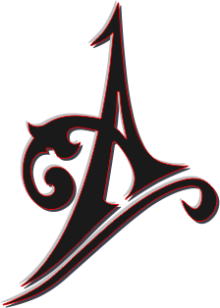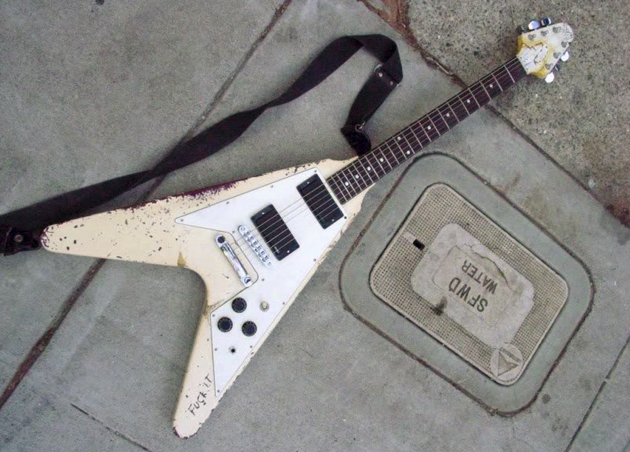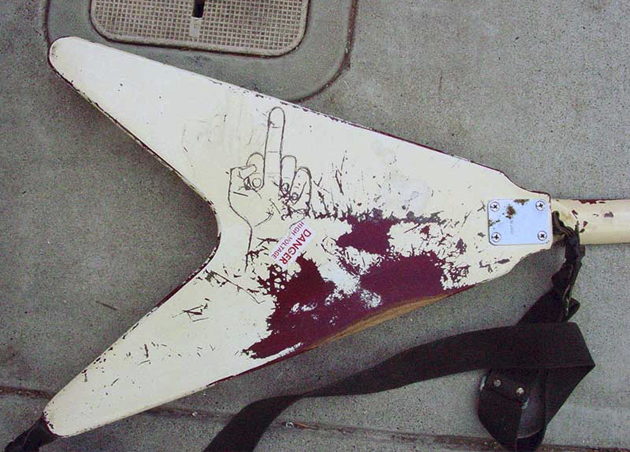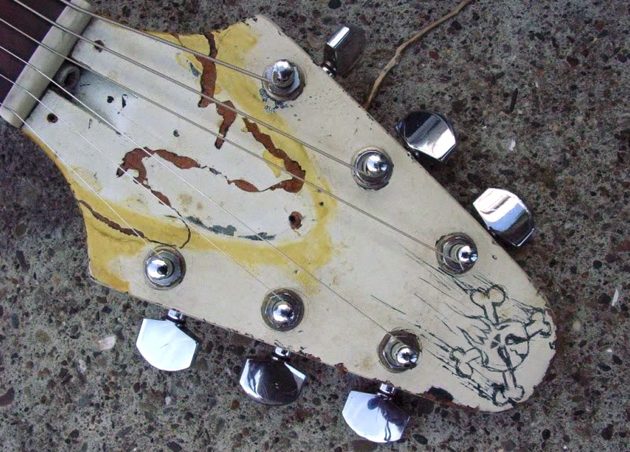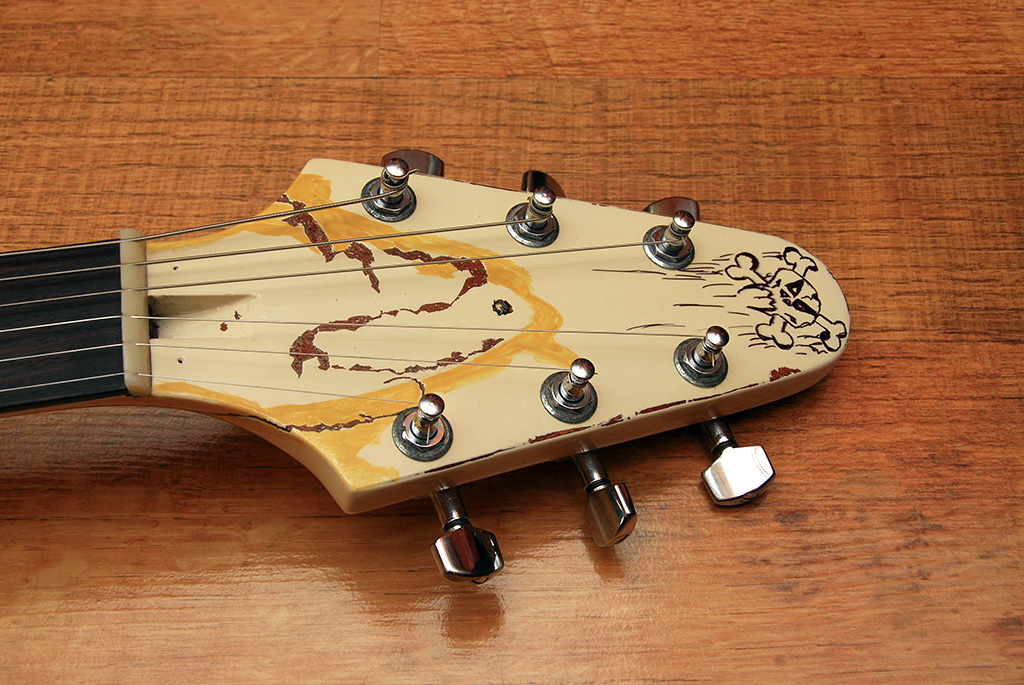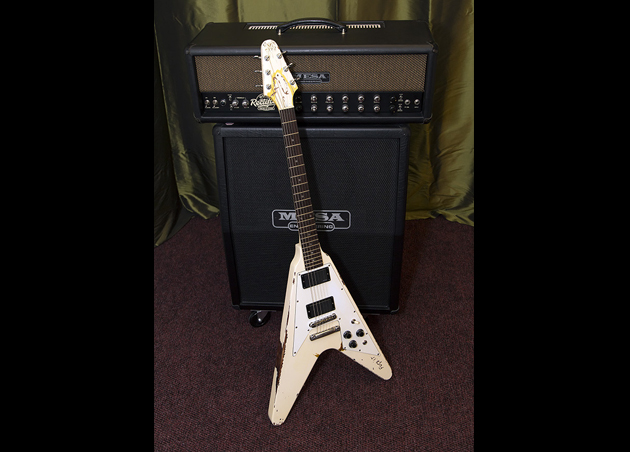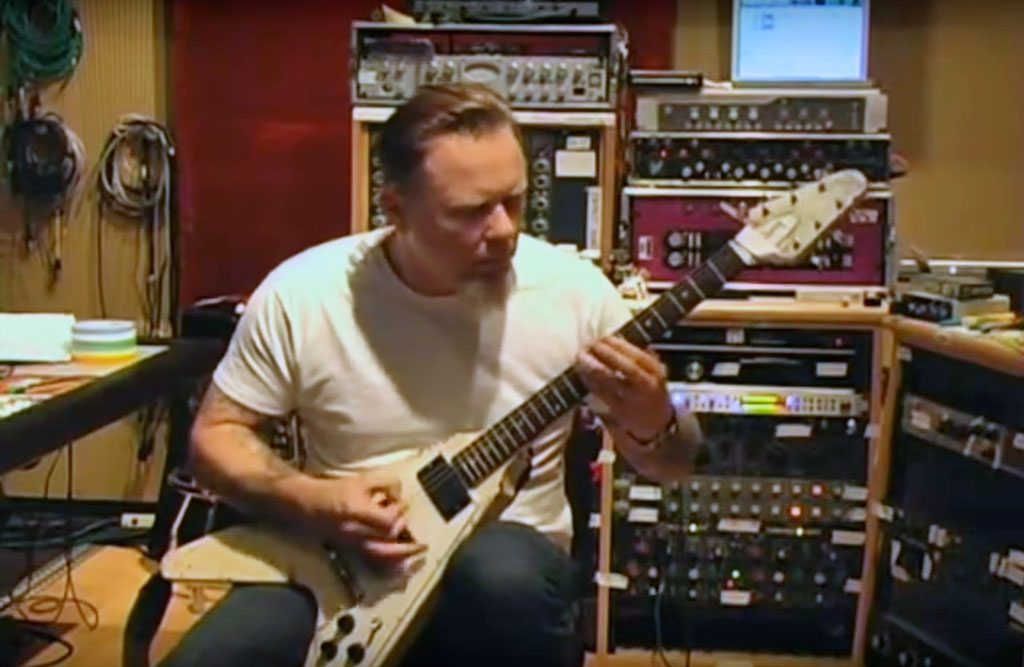
James Hetfield’s white Electra Kill 'Em All Flying V (1981-Present)
KILL ‘EM ALL -RIDE THE LIGHTNING
James Hetfield’s main guitar (only guitar) for recording and touring behind Kill ‘Em All was a white Flying V COPY by Electra. James used this in the studio and live until the neck snapped and it was retired. That is when James moved to the Explorer guitars.
James has stated several times that although it was a copy, they treated it as a real Gibson. James has mentioned in an interview that this is an Elektra Flying V copy.
“I got my white V in 1980, ” James Hetfield recalls. “It was the second guitar I ever owned, and I probably bought it for $200. I knew it was a copy, but we treated it as a real Gibson. I wanted a white one because Michael Schenker of U.F.O. had one, so I needed one, too. The neck snapped on it twice on tour. It’s been glued quite a few times. It’s got Seymour Duncan pickups in it, with a little more output for the crunch than the originals had. The only other thing that’s customized is the artwork [laughs]. That was the first guitar I started scratching stuff into.” – Jon Wiederhorn via guitar world
Originally painted Red, the guitar sported a white finish all throughout James’ usage in Metallica. While on tour, a break caused James to switch to his backup guitar, a white 1984 Gibson Explorer. This change would see the white flying v copy take a back seat to James’ newfound love. The back of the body has a hand with raised middle finger etched (by James, as stated above) into it.
At some point, James installed a Seymour Duncan Invader pickup into the bridge position.
